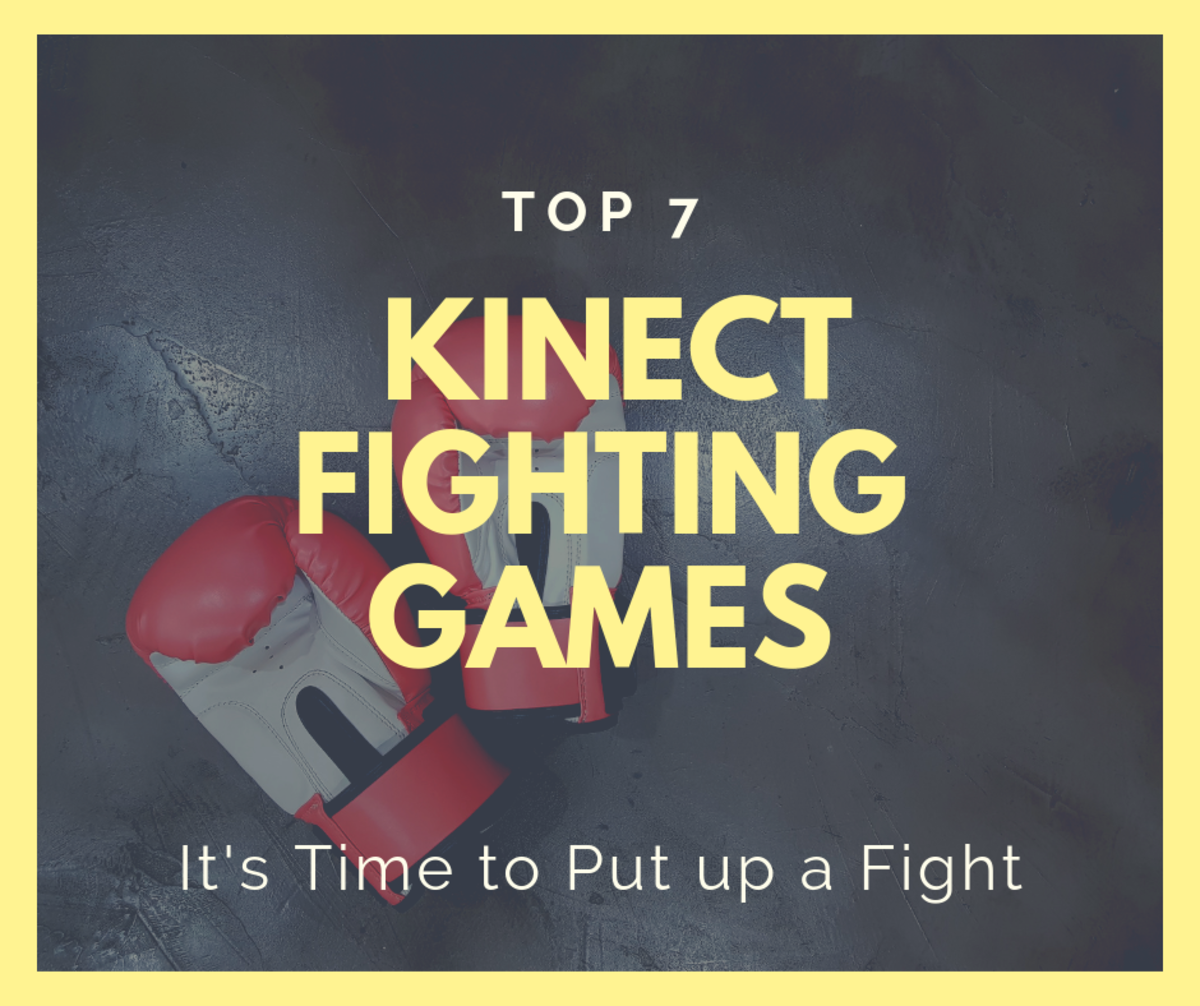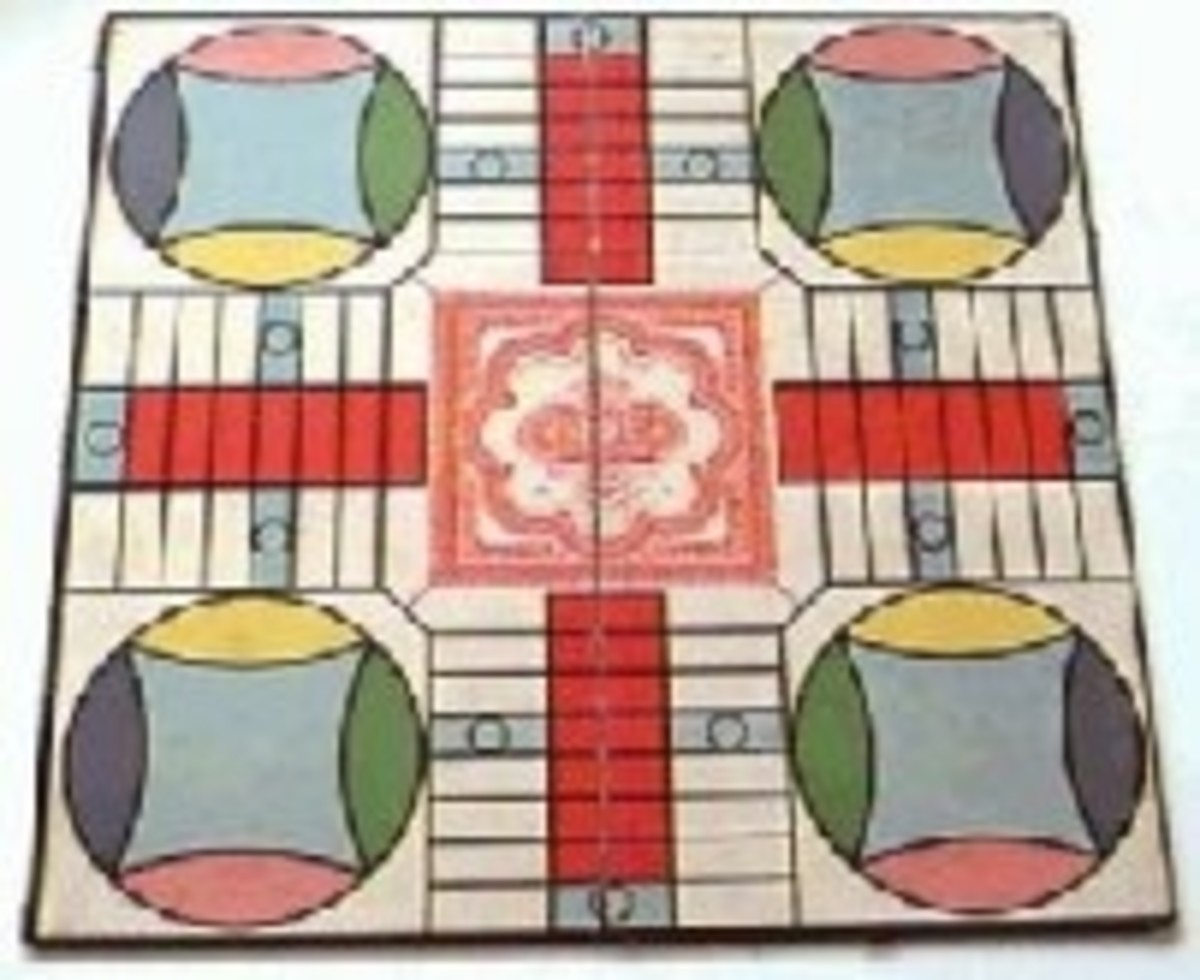A Chronology of Games: Part 1 (3000 B.C. - 700 B.C.)
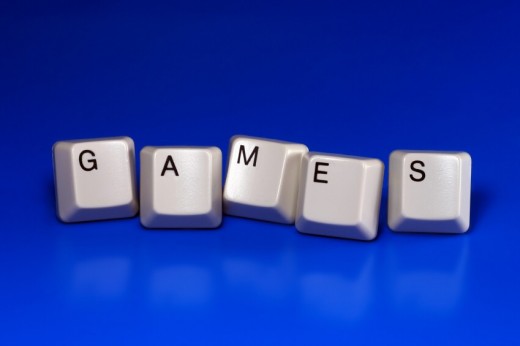
What can I expect to find in a Chronology of Games?
From the dawn of civilization, men and women have found increasingly interesting ways to entertain themselves. This hub set will encompass all of the major portions of history which have led us to where we are today in the following six categories:
- Board Games
- Sports
- Card Games
- Dice Games
- Video Games
- Mixed-Media games
Games in the above categories have been the jumping board for all entertainment as we know it today. So, without further ado, allow me to introduce
A chronology of Games: Part 1 (3000 B.C. - 700 B.C.)
3000 B.C. - 400 A.D.
X
| Board Games
| Sports
|
|---|---|---|
3000 B.C.
| Royal Game of Ur, Senet, Pre-Mancala
| Boxing (Bare-Fisted)
|
2000 B.C.
| Wei-qi (Predecessor to Go)
| Boxing (Bare-Fisted) becomes a spectator sport.
|
1800 B.C.
| Dogs and Jackals
| ^
|
1500 B.C.
| ^
| Boxing (Now with gloves)
|
1400 B.C.
| Morris and Mancala
| ^
|
776 B.C.
| ^
| First Olympic Games Held in Greece
|
700 B.C.
| Cubical Dice Invented
| ^
|
675 B.C.
| ^
| First record of a Boxing Contest
|
664 - 656 B.C.
| ^
| Chionis of Sparta sets records in jumping events that were not matched for nearly two hundred years
|
600 B.C.
| Go arrives in Japan
| First-recorded Polo match
|
500 B.C.
| ^
| Milo of Croton is the first man to win 6 Olympic Games
|
488 - 480 B.C.
| ^
| Astylos of Croton successfully sets new records becoming the first man to rival Chionis of Sparta
|
396 - 392 B.C.
| ^
| Cynisca, a Spartan Princess, becomes the first woman to win an olympic event
|
100 B.C.
| The first Dice-Gambling Games are created.
| Cùjú is invented in China (Predecessor to Football)
|
0 A.D.
| Emperor Claudius plays Tabula (Predecessor to Backgammon)
| ^
|
100 A.D.
| Backgammon is invented
| Horse Racing begins in England
|
300 A.D.
| Nard is Invented (Variant of Backgammon)
| ^
|
393 A.D.
| ^
| The Olympic Games are Outlawed
|
400 A.D
| Emperor Zeno lost a game of Backgammon, Scandinavia invents Hnefatafl
| Boxing is banned in Italy
|
During this portion of history, Card Games, Dice Games, Video Games and Mixed-Media games have not yet been invented. As such, this section focuses only on Board Games and Sports.
More detailed information Below
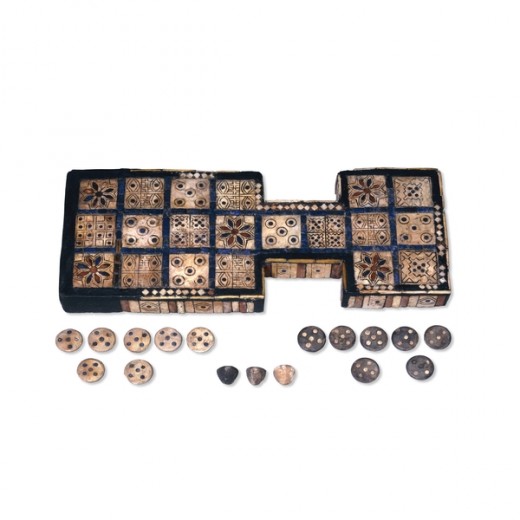
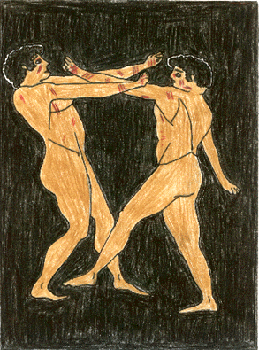
3000 B.C.
Board Games
During this period of time, the Royal Game of Ur was invented, which was a linear game. The randomization items were wooden sticks which were square on two ends, and long on four ends. These sticks were numbered zero and one. three sticks would be thrown, thus generating a number between zero and three. Whichever player traversed the entire board first was the winner. Thus, the first evident board game was played in a linear fashion. No choices could be made, and the outcome of the gamewas completely random.
At around the same time, Senet was invented. Senet is another linear game with the exception that several pieces may be on the board at the same time. In this regard, the game does not rely completely on randomness due to the fact that the player has a choice of which piece to move. However, (reference the picture below), the game still follows a linear path. Players begin on the top row and progress to the right until they reach the end of the row, at which point they proceed to the left along the middle row, at which point they proceed to the right along the bottom row. When a player reaches the hieroglyphs, a player must reach the final square by an exact count. This game uses four counting sticks which are colored on one side and uncolored on the other (Zero or One, respectively). One uncolored side equals one space, two equals two, three, three, and four, four. Four colored sides equals a move of five spaces total.
Also at this time, predecessors to Mancala have been found.
Sports
At this time, there are records of boxing matches. These matches were conducted with bare fists. At this time, there are no records of this having been a spectator sport. In fact, there's nothing to prove that there wasn't just a small group of people who enjoyed beating the ever-loving snot out of each other every now and then. There's not just enough information to say.
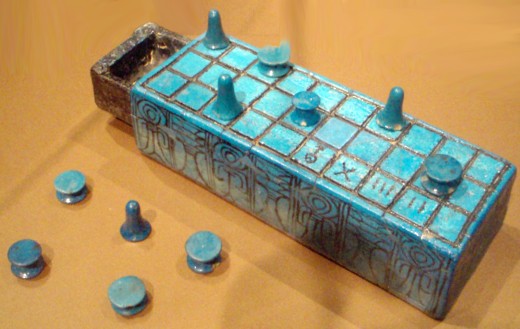
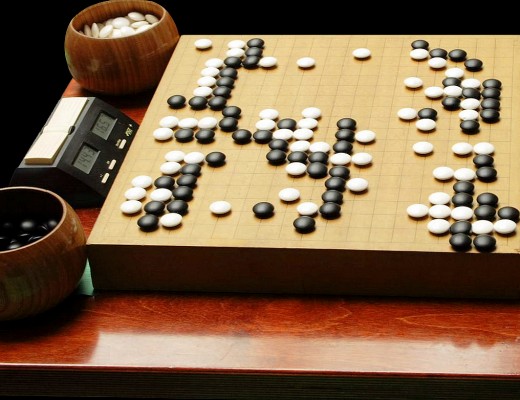
2000 B.C.
Board Games
During this millennium, Wei-qi was invented. Concise rules are as follows:
- The board is empty at the outset of the game.
- Black makes the first move, after which he and White alternate.
- A move consists of placing one stone of one's own color on an empty intersection on the board.
- A player may pass his turn at any time.
- A stone or solidly connected group of stones of one color is captured and removed from the board when all the intersections directly adjacent to it are occupied by the enemy. ( capture of the enemy takes precedence over self-capture.)
- No stone may be played so as to recreate a former board position.
- Two consecutive passes end the game.
- A player's territory consists of all the points he has either occupied or surrounded.
- The player with more territory wins.
Rules, by James Davies.
While the above rules are concise, they are not incredibly descriptive. Truly, a book describing the strategies of Go would be extensive, at best. Go, as far as complexity is concerned, is far more complex than chess, which game individuals have devoted lifetimes to studying and there are still strategies left to learn. Go, being far more complex, is so complex that no computer can, as of this writing, beat the current champion at the game.
Sports
Boxing, at this point in time, becomes a spectator sport. Now there is definitive proof that people actually desired to participate in these boxing matches instead of beating the tar out of each other.
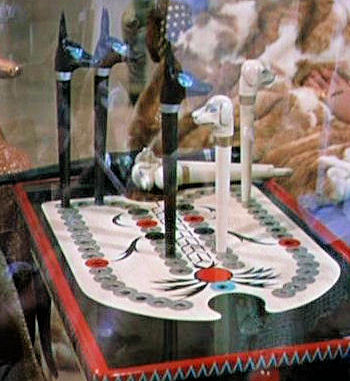
1800 B.C. - 1500 B.C.
Board Games
Dogs and Jackals is a game very similar to Senet, in that it is linear, but becomes the first themed abstract game. Throwing sticks are still used for this game, as dice have not been invented yet, but this game does have some interesting new tricks. This game involves penalties such as moving back several spaces if you happen to land on a certain space. The game is not entirely devoted to randomness, as there can be up to five playing pieces which the player can move at any given time. The goal of the game is simply to clear all of your canines from the table by reaching the final hole (blue, in the picture to the right).
Sports
It is at this time that Boxing develops so as to include hand-protection. Gloves and other things wrapped around the fists are now used so the boxers can have longer boxing careers.
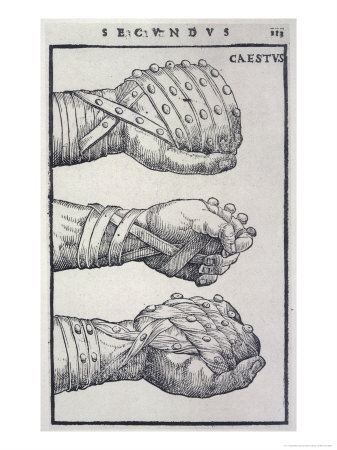
1400 B.C.
During this time, Morris games such as Three Men's Morris, Six Men's Morris, Nine Men's Morris and Twelve Men's Morris were invented. These games used various board shapes and the number of pieces per player listed in the name as the first X-in-a-row game, preceding tic-tac-toe by several hundred years.
Mancala, invented previously, but not refined until this century becomes a staple of African board game entertainment. The game is played by players alternately taking the contents of a wooden bowl and progressing around the board with them (counter-clockwise). When players pass their own scoring bowl (the rightmost for each player), they deposit one stone in it also, but not when they pass their opponent's scoring bowl. Play continues until no stones remain outside of the scoring bowls. Whichever player has more stones in the scoring bowl is the winner.
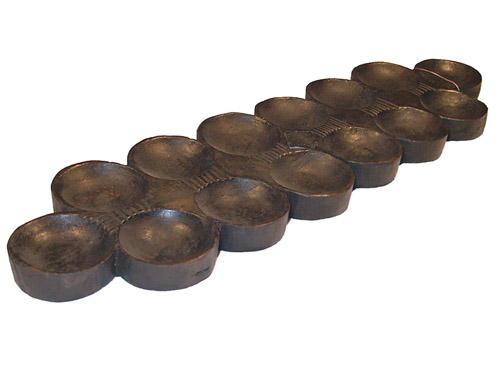
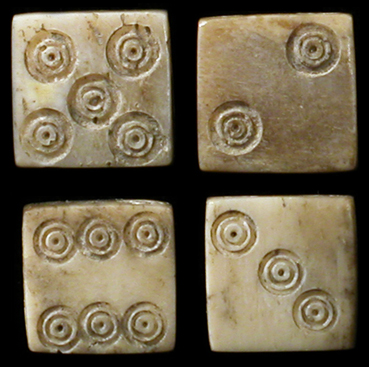
776 B.C. - 700 B.C.
Sports
In the year 776 B.C., the first Olympic Games were held in Greece. The Olympic Games consisted of exactly one game: The Stadion. The Stadion was a 200-yard sprint. Only men were allowed to participate. They ran naked on a track of packed-earth. The runners began by standing with their arms stretched out in front of them, instead of a crouching position practiced in today's Olympics.
Board games
Dice were invented near the year 700 B.C. However, though dice were now able to be used in any games which would be invented, dice were not used in games in and of themselves until much, much later.
End of Part 1
This section of the Chronology of Games is complete. Please leave a comment in the comments section if there is anything above that you particularly enjoyed reading about. I will link to other parts of the chronology in the Links section below, as I write them. Thanks for reading!




